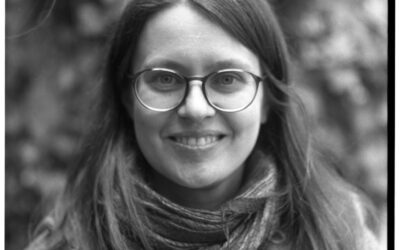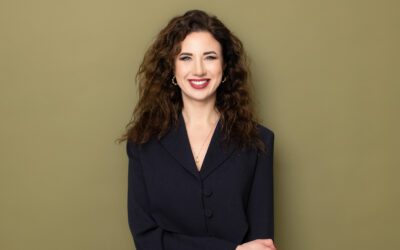The AABS Board is pleased to announce that Peter Lang Publishers has been awarded the AABS Book Publication Subvention for publishing “Baltic Human-Animal Histories: Relations, Trading, and Representations from an Entangled Perspective.” The volume, edited by Linda Kaljundi, Anu Mänd, Kadri Tüür, and Ulrike Plath, explores the perspectives of integrating the study of Baltic history and other branches of Baltic humanities more closely with the field of interdisciplinary human-animal studies.
Editor Bios:
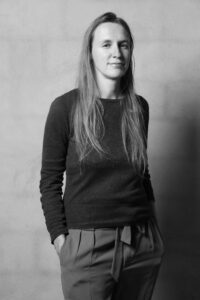 Linda Kaljundi (PhD) is a professor of cultural history at the Estonian Academy of Arts and a senior research fellow at Tallinn University. She specialises in Baltic history and historiography, as well as cultural memory studies and environmental history. Kaljundi has edited collections of articles on medieval and early modern history writing, as well as on Baltic historical fiction, images of history and scientific illlustration, including „Crusading and Chronicle Writing on the Medieval Baltic Frontier A Companion to the Chronicle of Henry of Livonia“ (with Marek Tamm and Carsten Selch Jensen, Ashgate 2011), „Novels, Histories, and Novel Nations: Historical Fiction and Cultural Memory in Finland and Estonia“ (with Eneken Laanes and Ilona Pikkanen, Finnish Literature Society 2015), and „Re-forming Texts, Music, and Church Art in the Early Modern North“ (with Tuomas M.S. Lehtonen, Amsterdam University Press, 2016).
Linda Kaljundi (PhD) is a professor of cultural history at the Estonian Academy of Arts and a senior research fellow at Tallinn University. She specialises in Baltic history and historiography, as well as cultural memory studies and environmental history. Kaljundi has edited collections of articles on medieval and early modern history writing, as well as on Baltic historical fiction, images of history and scientific illlustration, including „Crusading and Chronicle Writing on the Medieval Baltic Frontier A Companion to the Chronicle of Henry of Livonia“ (with Marek Tamm and Carsten Selch Jensen, Ashgate 2011), „Novels, Histories, and Novel Nations: Historical Fiction and Cultural Memory in Finland and Estonia“ (with Eneken Laanes and Ilona Pikkanen, Finnish Literature Society 2015), and „Re-forming Texts, Music, and Church Art in the Early Modern North“ (with Tuomas M.S. Lehtonen, Amsterdam University Press, 2016).
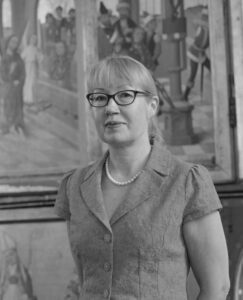 Anu Mänd (PhD) is senior researcher at the Institute of History, Archaeology and Art History of Tallinn University. Her main research interests are in the social and cultural history of medieval and early modern Baltic Sea region. She is the author of Urban Carnival: Festive Culture in the Hanseatic Cities of the Eastern Baltic, 1350–1550 (Brepols, 2005), Church Silver: Liturgical Vessels in Medieval Livonia (2008, in Estonian), Medieval Altars and Altarpieces (2019, in Estonian), and several other books. Co-edited volumes include: Art, Cult and Patronage: Die visuelle Kultur im Ostseeraum zur Zeit Bernt Notkes (Ludwig, 2013), Images and Objects in Ritual Practices in Medieval and Early Modern Northern and Central Europe, (Cambridge Scholars Publishing, 2013). Symbolic Identity and the Cultural Memory of Saints (Cambridge Scholars Publishing, 2018), and Making Livonia: Actors and Networks in the Medieval and Early Modern Baltic Sea Region (Routledge, 2020).
Anu Mänd (PhD) is senior researcher at the Institute of History, Archaeology and Art History of Tallinn University. Her main research interests are in the social and cultural history of medieval and early modern Baltic Sea region. She is the author of Urban Carnival: Festive Culture in the Hanseatic Cities of the Eastern Baltic, 1350–1550 (Brepols, 2005), Church Silver: Liturgical Vessels in Medieval Livonia (2008, in Estonian), Medieval Altars and Altarpieces (2019, in Estonian), and several other books. Co-edited volumes include: Art, Cult and Patronage: Die visuelle Kultur im Ostseeraum zur Zeit Bernt Notkes (Ludwig, 2013), Images and Objects in Ritual Practices in Medieval and Early Modern Northern and Central Europe, (Cambridge Scholars Publishing, 2013). Symbolic Identity and the Cultural Memory of Saints (Cambridge Scholars Publishing, 2018), and Making Livonia: Actors and Networks in the Medieval and Early Modern Baltic Sea Region (Routledge, 2020).
 Kadri Tüür (PhD) is a researcher in the project Estonian Environmentalism in the 20th century: ideology, discourses, practices at Tallinn University. Her PhD thesis applied semiotic methodology in the analysis of written nature representations. She served as the head of Estonian Center for Environmental History KAJAK from 2018 to 2021. She has co-edited several volumes on ecocriticism and environmental humanities, such as Eesti looduskultuur (2005, together with Timo Maran), Umweltphilosophie und Landschaftsdenken im baltischen Kulturraum = Environmental philosophy and landscape thinking (2011, together with Liina Lukas, Ulrike Plath), The semiotics of animal representations (2014, together with Morten Tønnessen). She is currently editor-in-chief of Studia Vernacula, Estonian research journal for craft studies.
Kadri Tüür (PhD) is a researcher in the project Estonian Environmentalism in the 20th century: ideology, discourses, practices at Tallinn University. Her PhD thesis applied semiotic methodology in the analysis of written nature representations. She served as the head of Estonian Center for Environmental History KAJAK from 2018 to 2021. She has co-edited several volumes on ecocriticism and environmental humanities, such as Eesti looduskultuur (2005, together with Timo Maran), Umweltphilosophie und Landschaftsdenken im baltischen Kulturraum = Environmental philosophy and landscape thinking (2011, together with Liina Lukas, Ulrike Plath), The semiotics of animal representations (2014, together with Morten Tønnessen). She is currently editor-in-chief of Studia Vernacula, Estonian research journal for craft studies.
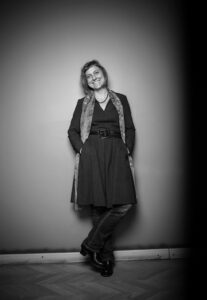
Ulrike Plath (PhD) is a professor for Baltic German studies and environmental history at the University of Tallinn and a senior researcher at the Estonian Academy of Sciences. She is a founding member and head of the Estonian Center for Environmental History (2013-2018, 2021-), and has served the European Society for Environmental History on different positions. She has been working on Baltic German colonial phantasies (Esten und Deutschen in den baltischen Provinzen Russlands. Fremdheitskonstruktionen, Lebenswelten, Kolonialphantasien 1750–1850, Harrassowitz 2011), food culture, gardening, climate and animal history and has co-edited Umweltphilosophie und Landschaftsdenken im baltischen Raum – Environmental Philosophy and Landscape Thinking (with Liina Lukas, Kadri Tüür, Jaan Undusk, Tallinn 2011) and Food Culture and Politics in the Baltic States (with Diana Mincyte, Routledge, 2017). She has been holding several grants on Baltic environmental history.
Book Summary
Animals are newcomers in Baltic history writing. Their slow, but steady bioinvasion into the habitat of Baltic historians started only at the end of the last millennium. In this edited volume, we explore the perspectives of integrating the study of Baltic history and other branches of Baltic humanities more closely with the field of interdisciplinary human-animal studies. Investigating historical entanglements between human and more-than-human animals from the pre-Christian period to the Soviet times and covering a wide range of different species, the volume demonstrates new ways of narrating and studying Baltic history.
In doing so, the editors and authors of this volume use – but also aim to develop further – the competence of Baltic historical studies and humanities in transnational and entangled research. During the last decades, historians, art historians, literary scholars and other humanities researchers have demonstrated the importance of analyzing Baltic history from multiple perspectives. They have focused on the entanglements of different ethnic, social, and other groups in Baltic history, as well as pointed out close and complex relations between the cultural imaginaries and memories of those groups.
Coming from a highly transnational and transdisciplinary tradition of studying cultural and environmental history and humanities, our aim is to open up this entangled and transnational approach to Baltic history and culture to a closer analysis of interspecies’ entanglements. Taking the interrelatedness of species as given, we do not depart from classifying animals according to their relation to their human co-mates (i.e. wild animals, livestock, pets), but we focus on different forms of entanglements and their representations in literary, material, visual and other sources of Baltic history.
The contributions in this volume are organized on a thematic basis, featuring studies of animals in relation to human activities and practices; animals as trade objects; and the visual representations of animals. These three forms of entanglements fit best with our articles that have a strong focus on medieval and early modern times. Covering a time period of around one thousand years, the chapters also enable us to discuss continuity and change in Baltic human-animal history over extended periods.
Although this book is not a monograph, but an edited volume, its chapters are the result of a long collaboration that has included seminars, workshops, as well as sharing peer feedback on written manuscripts. Being conscious of the novelty of non-human animals as a subject of Baltic history, our authors have all been inspired by and much dedicated to the joint experiment of sketching an entirely new research field and perspective on Baltic history.
The authors of the book are leading Baltic historians (Stefan Donecker, Inna Jürjo, Linda Kaljundi, Juhan Kreem, Ivar Leimus, Ulrike Plath), art historians (Jaanika Anderson, Hilkka Hiiop, Anu Mänd), archaeologists (Tõnno Jonuks, Lembi Lõugas, Eve Rannamäe), semioticians (Kadri Tüür), geographers (Anita Zariņa, Dārta Treija and Ivo Vinogradovs), classical philologists (Kaarina Rein) and theologians (Meelis Friedenthal).
Hence we strongly believe that this edited volume makes a remarkable and a unique contribution to the field of Baltic Studies. It is highly interdisciplinary and gives a compact overview of the state of animal studies in different fields of Baltic humanities. Speaking about Baltic history from a more-than-human perspective enables us to envisage novel periodization and to address highly transnational questions which have not been asked before. It also associates the humanities to natural sciences and biology more directly than before, and enables new transdisciplinary research perspectives in the future.
What is the AABS Book Publication Subvention?
The AABS awards its Book Publication Subvention of up to $5,000 for individually authored books, edited volumes, and multiple-authored books in English that make a substantial scholarly contribution to Baltic Studies. The applications must be submitted by publishers, not authors. Priority will be given to single author’s first monographs.
AABS awards two Book Publication Subventions each year. Applications may be submitted for review anytime, on a rolling basis.
Other Grants and Fellowships News
Sophie Peng Awarded 2024-2025 Baumanis Grant
The Association for the Advancement of Baltic Studies is pleased to announce that Sophie Peng has been awarded the 2024-2025 Baumanis Grant for Creative Projects in Baltic Studies for her project “Lace Narratives: Hand-work (EE: Käsi-Töö)." The Baumanis Grant is an...
Jelena Šalaj Awarded 2024-2025 Baumanis Grant
The Association for the Advancement of Baltic Studies is pleased to announce that Jelena Šalaj has been awarded the 2024-2025 Baumanis Grant for Creative Projects in Baltic Studies for her book project "North of Photography." The Baumanis Grant is an award made to...
Ornela Ramašauskaitė Awarded 2024-2025 Baumanis Grant
The Association for the Advancement of Baltic Studies is pleased to announce that Ornela Ramašauskaitė has been awarded the 2024-2025 Baumanis Grant for Creative Projects in Baltic Studies for her project "Art Across Borders: The Baltic Visual Legacy Project." The...


